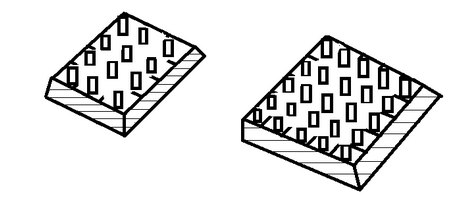
A batch of bottles were packed in 25 boxes with 12 bottles in each box. If the same batch is packed using 20 bottles in each box, how many boxes would be filled?


Answer
525k+ views
Hint: To solve the given question, we must note down the given data and we know that the size of the box depends with respect to size of bottles, hence based on the quantity of bottles we can find in how many boxes 20 bottles can be packed and let us consider x to be the number of boxes to find.
Complete step-by-step answer:
25 boxes are packed with 12 bottles in each box; hence we need to find the number of boxes if 20 bottles are in each box.
Let x be the number of boxes.
The following table is obtained:
As we increase the number of bottles in each box, the number of boxes to be packed decreases. Therefore, they are in inverse proportion.
Hence, now let us find the number of boxes required to pack these bottles as: \[\left( {{x_1}{y_1} = {x_2}{y_2}} \right)\]
\[25 \times 12 = x \times 20\]
\[\dfrac{{25 \times 12}}{{20}} = x\]
\[\dfrac{{5 \times 12}}{4} = x\]
\[5 \times 3 = x\]
Hence, the value of x is:
\[x = 15\]
Therefore, the number of boxes required to pack these bottles is 15.
So, the correct answer is “ 15 ”.
Note: The key point to solve this given question is that as mentioned 25 boxes with 12 bottles in each box, it implies that more the number of bottles, lesser will be the number of boxes. Hence, the number of bottles and the number of boxes required to pack these are inversely proportional to each other and obtaining the table we can solve these types of questions easily.
Complete step-by-step answer:
25 boxes are packed with 12 bottles in each box; hence we need to find the number of boxes if 20 bottles are in each box.
Let x be the number of boxes.
The following table is obtained:
| Number of boxes | 25 | x |
| Number of bottles in each box | 12 | 20 |
As we increase the number of bottles in each box, the number of boxes to be packed decreases. Therefore, they are in inverse proportion.
Hence, now let us find the number of boxes required to pack these bottles as: \[\left( {{x_1}{y_1} = {x_2}{y_2}} \right)\]
\[25 \times 12 = x \times 20\]
\[\dfrac{{25 \times 12}}{{20}} = x\]
\[\dfrac{{5 \times 12}}{4} = x\]
\[5 \times 3 = x\]
Hence, the value of x is:
\[x = 15\]
Therefore, the number of boxes required to pack these bottles is 15.
So, the correct answer is “ 15 ”.
Note: The key point to solve this given question is that as mentioned 25 boxes with 12 bottles in each box, it implies that more the number of bottles, lesser will be the number of boxes. Hence, the number of bottles and the number of boxes required to pack these are inversely proportional to each other and obtaining the table we can solve these types of questions easily.
Recently Updated Pages
Master Class 12 Business Studies: Engaging Questions & Answers for Success

Master Class 12 Economics: Engaging Questions & Answers for Success

Master Class 12 English: Engaging Questions & Answers for Success

Master Class 12 Maths: Engaging Questions & Answers for Success

Master Class 12 Social Science: Engaging Questions & Answers for Success

Master Class 12 Chemistry: Engaging Questions & Answers for Success

Trending doubts
What is BLO What is the full form of BLO class 8 social science CBSE

Which one of the following groups comprises states class 8 social science CBSE

Citizens of India can vote at the age of A 18 years class 8 social science CBSE

Full form of STD, ISD and PCO

A couple went for a picnic They have 5 sons and each class 8 maths CBSE

Right to vote is a AFundamental Right BFundamental class 8 social science CBSE




